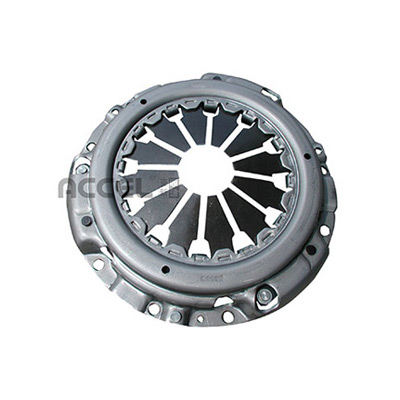- Arabic
- French
- Russian
- Spanish
- Portuguese
- Turkish
- Armenian
- English
- Albanian
- Amharic
- Azerbaijani
- Basque
- Belarusian
- Bengali
- Bosnian
- Bulgarian
- Catalan
- Cebuano
- Corsican
- Croatian
- Czech
- Danish
- Dutch
- Afrikaans
- Esperanto
- Estonian
- Finnish
- Frisian
- Galician
- Georgian
- German
- Greek
- Gujarati
- Haitian Creole
- hausa
- hawaiian
- Hebrew
- Hindi
- Miao
- Hungarian
- Icelandic
- igbo
- Indonesian
- irish
- Italian
- Japanese
- Javanese
- Kannada
- kazakh
- Khmer
- Rwandese
- Korean
- Kurdish
- Kyrgyz
- Lao
- Latin
- Latvian
- Lithuanian
- Luxembourgish
- Macedonian
- Malgashi
- Malay
- Malayalam
- Maltese
- Maori
- Marathi
- Mongolian
- Myanmar
- Nepali
- Norwegian
- Norwegian
- Occitan
- Pashto
- Persian
- Polish
- Punjabi
- Romanian
- Samoan
- Scottish Gaelic
- Serbian
- Sesotho
- Shona
- Sindhi
- Sinhala
- Slovak
- Slovenian
- Somali
- Sundanese
- Swahili
- Swedish
- Tagalog
- Tajik
- Tamil
- Tatar
- Telugu
- Thai
- Turkmen
- Ukrainian
- Urdu
- Uighur
- Uzbek
- Vietnamese
- Welsh
- Bantu
- Yiddish
- Yoruba
- Zulu
Dec . 22, 2024 22:42 Back to list
High-Quality 8PK Ribbed Belts for Enhanced Performance and Durability in Automotive Applications
Understanding 8PK Ribbed Belts Essential Components in Modern Machinery
In the world of machinery and automotive components, the 8PK ribbed belt is an essential part that plays a critical role in the functioning of engines and various mechanical systems. Characterized by its distinct ribbed design, the 8PK ribbed belt is primarily utilized in serpentine systems, offering a highly efficient means of transferring rotational power between components such as the alternator, water pump, and air conditioning compressor.
What is an 8PK Ribbed Belt?
The term 8PK refers to a specific type of ribbed belt that has eight ribs. These ribs are designed to maximize grip on the pulleys while ensuring smooth engagement and disengagement during operation. The 'PK' indicates that it is part of a family of belts used in serpentine systems. The ribbed structure helps in effectively transmitting torque while minimizing slippage, making it a popular choice in a variety of applications from automotive engines to industrial machinery.
Advantages of 8PK Ribbed Belts
One of the primary advantages of using 8PK ribbed belts is their ability to handle higher loads compared to traditional flat belts. The increased surface area provided by the ribs allows for better traction and grip on pulleys, resulting in more efficient power transmission. This efficiency translates to improved performance and enhanced reliability in the machinery being powered.
Additionally, 8PK ribbed belts are designed to fit snugly within their pulleys, reducing the likelihood of being dislodged during operation. This increased stability can lead to prolonged service life, which is essential in environments where machinery is subjected to constant vibrations and operational stresses. Furthermore, these belts are generally manufactured from high-quality rubber compounds that exhibit excellent resistance to wear and environmental conditions, ensuring they can withstand the rigors of the modern industrial landscape.
8pk vribbed belts

Applications of 8PK Ribbed Belts
8PK ribbed belts are employed in a variety of applications, with automotive use being one of the most prominent. They are commonly found in passenger vehicles, trucks, and high-performance cars where they connect multiple accessories to the engine. The smooth operation of components powered by the 8PK ribbed belt is vital for optimal vehicle performance, fuel efficiency, and overall reliability.
In addition to automotive applications, 8PK ribbed belts are also utilized in industrial settings. They play a crucial role in manufacturing equipment, conveyor systems, and various types of machinery where the transfer of power is necessary. The versatility of 8PK belts makes them suitable for an extensive range of machines, ensuring that they are a common choice for many engineers and technicians.
Maintenance and Replacement
While 8PK ribbed belts are designed for durability, they are not immune to wear and tear over time. Regular inspection of these belts is vital for maintaining the efficient operation of the machinery they serve. Signs of wear such as cracking, fraying, or reduced flexibility indicate the need for replacement. Timely replacement of worn belts is crucial to prevent unexpected machinery breakdowns and costly downtime.
Conclusion
In summary, the 8PK ribbed belt is a pivotal component in many mechanical systems, particularly in automotive and industrial applications. With its unique design and superior performance characteristics, it provides efficient power transfer, ensures reliability, and enhances the overall functionality of machinery. Regular maintenance and timely replacement can maximize its lifespan, making it a wise investment for any mechanical system. As technology continues to evolve, the importance of high-quality components like the 8PK ribbed belt will remain significant in enhancing operational efficiency and performance.
-
Upgrade Power Steering Pump Belt for Smooth, Quiet Operation
NewsAug.27,2025
-
Precision Timing Belt & Chain: Engine Performance & Durability
NewsAug.26,2025
-
Precision Lathe Drive Belts: Durable & Reliable Performance
NewsAug.25,2025
-
84.5 Serpentine Belt: Durable & Precision Fit for Your Engine
NewsAug.24,2025
-
Premium Ribbed Drive Belts for Quiet Power Transmission
NewsAug.23,2025
-
High-Performance Vehicle Timing Belt for Engine Precision
NewsAug.22,2025

